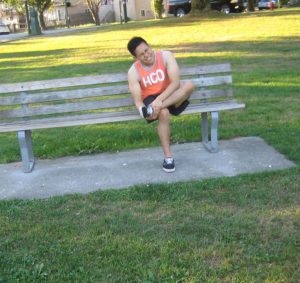A foot fracture is a condition where one or several foot bones have been broken due to a heavy force or blow to the foot such as kicking a hard surface or dropping a heavy object onto the foot. A foot fracture can also occur from repetitive activity that applies stress to the foot or from overuse, these commonly occur in playing contact and high-impact sports such as soccer or basketball. The injury is quite painful, but it rarely requires surgery as in most cases the fracture will naturally heal with enough rest.
There are two types of fractures, a “non-displaced” fracture and a “displaced” fracture. A fracture without displacement is one where there is cracking of the bone but there is no separation. If there is displacement, there is a crack in the bone and fully separates. The fracture can also be divided into a “closed” and “open” fracture, a closed fracture is where the skin is not broken while an open fracture is where the skin is broken.
An open fracture is a serious injury and requires medical attention immediately as a break in the skin will allow bacteria into the skin through the wound and cause an infection to the bone.
Signs and symptoms of a foot fracture
- Bruising or discoloration of the foot
- Pain when walking or applying weight to the injured foot
Place a cold compress with an ice pack on your foot to reduce the inflammation.
If you suspect a foot fracture, seek immediate medical attention for a diagnosis and prevent it from becoming worse. If left alone, the symptoms may worsen and progress to lingering foot pain and affect the capability to walk.
To treat your foot fracture before seeing a doctor, you can do the following:
- Place a cold compress with an ice pack on your foot to reduce the inflammation.
- Raise the foot as high as you can.
- Limit the weight that you put on the injured foot.
- Wrap the injured foot with a clean dressing.
The doctor performs an examination on your foot to determine how far the damages extend. Your doctor will assess the symptoms, will ask you how the accident happened and if you have any previous fractures. Your doctor may also perform an x-ray test to check the damage to the bones.
Most of the broken toes heal without surgery, the injury will heal naturally as time passes and eventually go back to normal. For several days, you may find it painful if you put weight on your foot but over time the pain will reduce and eventually subside until you can comfortably put weight on your foot. If your bone is out of place, however, your doctor should manipulate it to return it to its proper place to keep your foot straight and let it heal naturally.
Disclaimer / More Information
The material posted on this page on a foot fracture is for learning purposes only. Learn to recognize the signs of injury and how it is managed by taking a first aid and CPR class with one of our training providers.
FACT CHECK
https://www.webmd.com/a-to-z-guides/broken-foot#1
https://orthoinfo.aaos.org/en/diseases–conditions/toe-and-forefoot-fractures
https://orthoinfo.aaos.org/en/diseases–conditions/stress-fractures-of-the-foot-and-ankle/

